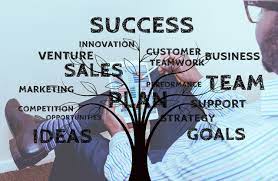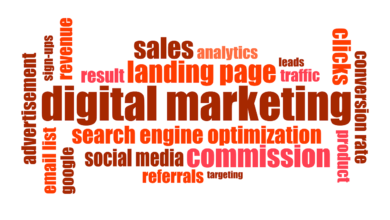Unleash Success: Key Strategies to Amplify Sales

Introduction
In the fast-paced world of sales, success is not merely a goal; it’s a necessity. Effective sales strategies are the cornerstone of any thriving business, serving as the driving force behind revenue growth and market dominance. This article delves into the essential components of achieving sales success, providing actionable insights and strategies to amplify your sales efforts.
Setting the Stage for Sales Success
In today’s competitive landscape, setting the stage for sales success is paramount. Businesses must lay a solid foundation built on a clear understanding of their target market, competitive landscape, and unique value proposition. Without this groundwork, even the most innovative products or services may struggle to gain traction in the market.
Why Effective Sales Strategies are Crucial
Effective sales strategies are the lifeblood of any successful organization. They provide a roadmap for acquiring and retaining customers, driving revenue growth, and maintaining a competitive edge in the market. Without a well-defined sales strategy, businesses risk aimlessly navigating the complex terrain of the marketplace, leading to missed opportunities and stagnation.
Understanding the Sales Process
At its core, the sales process is a series of interconnected steps designed to guide prospects from initial awareness to final purchase. Understanding this process is essential for identifying areas of improvement, optimizing performance, and ultimately driving revenue growth.
Overview of the Sales Funnel
The sales funnel, often referred to as the buyer’s journey, is a visual representation of the stages a prospect goes through before making a purchase. From initial awareness to final conversion, each stage of the funnel presents unique opportunities and challenges for sales professionals.
Importance of Customer Journey Mapping
Customer journey mapping is the process of visualizing and understanding the various touch points a prospect interacts with throughout their buying journey. By mapping out these touch points, businesses can gain valuable insights into customer behavior, preferences, and pain points, allowing them to tailor their sales strategies for maximum impact.
Crafting an Irresistible Value Proposition
A compelling value proposition is the cornerstone of successful sales. It articulates the unique benefits and value that a product or service offers to its target audience, setting it apart from competitors and compelling prospects to take action.
Defining Your Unique Selling Proposition (USP)
Your unique selling proposition (USP) is what sets your product or service apart from competitors in the marketplace. It encapsulates the unique features, benefits, and value that only your offering can provide, giving you a competitive edge and resonating with your target audience.
Creating Compelling Value Propositions for Different Buyer Personas
Every customer is unique, with their own set of needs, preferences, and pain points. Crafting compelling value propositions for different buyer personas allows businesses to effectively target and engage diverse segments of their target market, increasing the likelihood of conversion.
Building a Strong Sales Team
A strong sales team is the backbone of any successful sales operation. From prospecting and lead generation to closing deals and providing exceptional customer service, a well-rounded sales team is essential for driving revenue growth and achieving long-term success.
Hiring the Right Talent: Traits to Look For
When it comes to building a strong sales team, hiring the right talent is paramount. Look for candidates who possess a combination of industry knowledge, communication skills, resilience, and a results-driven mindset. These traits are indicative of individuals who have the potential to excel in a sales role and drive meaningful results for your business.
Training and Developing Sales Representatives
Once you’ve assembled your sales dream team, the next step is to invest in their ongoing training and development. Provide them with the tools, resources, and support they need to continuously refine their skills, stay ahead of industry trends, and adapt to evolving market dynamics.
Utilizing Data and Analytics
In today’s data-driven world, leveraging customer data and analytics is essential for optimizing sales performance and driving revenue growth. By harnessing the power of data, businesses can gain valuable insights into customer behavior, preferences, and purchasing patterns, allowing them to make informed decisions and tailor their sales strategies for maximum impact.
Leveraging Customer Data for Insights
Customer data is a goldmine of valuable insights waiting to be unearthed. By analyzing data related to customer demographics, purchasing behavior, and engagement metrics, businesses can gain a deeper understanding of their target audience, identify emerging trends, and anticipate future needs and preferences.
Implementing Sales Analytics Tools and Techniques
In addition to leveraging customer data, businesses can also benefit from implementing sales analytics tools and techniques. These tools provide real-time visibility into key sales metrics, such as conversion rates, sales cycle length, and pipeline velocity, empowering sales teams to make data-driven decisions and optimize performance.
Optimizing Sales Channels
In today’s omni channel world, businesses have access to a wide array of sales channels, both online and offline. By strategically optimizing these channels, businesses can maximize their reach, engage prospects at every stage of the buyer’s journey, and drive meaningful results.
Exploring Different Sales Channels: Offline vs. Online
Offline and online sales channels each offer unique advantages and challenges. While offline channels, such as brick-and-mortar stores and trade shows, provide opportunities for face-to-face interaction and personalized service, online channels, such as e-commerce platforms and social media, offer unparalleled reach and scalability.
Maximizing the Potential of E-commerce Platforms
With the rise of e-commerce, businesses have unprecedented opportunities to reach customers around the globe and drive sales 24/7. By optimizing their e-commerce platforms for usability, speed, and security, businesses can create seamless shopping experiences that delight customers and drive conversion.
Effective Communication Strategies
Effective communication lies at the heart of successful sales. From engaging prospects and building rapport to overcoming objections and closing deals, mastering the art of communication is essential for driving revenue growth and achieving sales success.
Mastering the Art of Persuasion
At its core, sales are about persuasion. It’s about compelling prospects to take action, whether it’s making a purchase, scheduling a demo, or signing up for a free trial. Mastering the art of persuasion involves understanding your audience’s needs and motivations, tailoring your message accordingly, and delivering it with confidence and conviction.
Improving Active Listening Skills
In addition to mastering the art of persuasion, effective communication also requires strong listening skills. Active listening involves fully engaging with prospects, empathizing with their concerns, and asking probing questions to uncover their underlying needs and motivations. By listening attentively and responding thoughtfully, sales professionals can build trust and rapport with prospects, increasing the likelihood of conversion.
Implementing Sales Automation
In today’s fast-paced business environment, sales automation has become an indispensable tool for streamlining processes, improving efficiency, and driving productivity. By automating repetitive tasks, such as lead scoring, email follow-ups, and data entry, businesses can free up valuable time and resources, allowing their sales teams to focus on high-value activities and strategic initiatives.
Streamlining Sales Processes with Automation Tools
From prospecting and lead generation to pipeline management and forecasting, sales automation tools can streamline every aspect of the sales process. By automating routine tasks and workflows, businesses can eliminate manual errors, accelerate sales cycles, and improve overall efficiency.
Integrating CRM Systems for Better Management
Customer relationship management (CRM) systems play a central role in sales automation, serving as a centralized hub for storing customer data, managing interactions, and tracking sales activities. By integrating CRM systems with other sales and marketing tools, businesses can gain a 360-degree view of their customers, streamline communication across teams, and drive more meaningful engagement.
Creating Compelling Sales Collateral
In the world of sales, presentation is everything. Compelling sales collateral can make the difference between capturing a prospect’s interest and losing their attention. From attention-grabbing presentations to persuasive sales scripts and templates, effective sales collateral is essential for communicating value, building credibility, and driving conversion.
Designing Attention-Grabbing Sales Presentations
A well-designed sales presentation can captivate audiences, communicate key messages, and compel prospects to take action. When designing sales presentation, focus on clarity, simplicity, and visual appeal. Use compelling visuals, persuasive storytelling, and concise messaging to engage prospects and convey the value of your offering.
Crafting Persuasive Sales Scripts and Templates
In addition to presentations, sales professionals can also benefit from crafting persuasive sales scripts and templates. These resources provide a framework for engaging prospects, addressing common objections, and guiding conversations towards a desired outcome. By tailoring scripts and templates to specific buyer personas and sales scenarios, businesses can streamline their sales process and increase conversion rates.
Fostering Customer Relationships
In today’s customer-centric marketplace, fostering strong relationships with customers is essential for long-term success. By building trust, providing exceptional service, and delivering value at every touch point, businesses can cultivate loyal customers who become advocates for their brand.
Building Trust and Credibility
Trust is the foundation of any successful relationship, including those between businesses and customers. To build trust with customers, businesses must demonstrate integrity, reliability, and transparency in their interactions. By consistently delivering on promises, resolving issues promptly, and communicating openly, businesses can earn the trust and confidence of their customers, fostering long-lasting relationships built on mutual respect and loyalty.
Providing Exceptional Customer Service
Exceptional customer service is a key differentiator in today’s competitive marketplace. By going above and beyond to meet customer needs, exceed expectations, and resolve issues quickly and effectively, businesses can create memorable experiences that leave a lasting impression on customers and inspire loyalty.
Strategic Pricing Strategies
Pricing is a critical aspect of the sales process, influencing customer perceptions, purchasing decisions, and overall profitability. By implementing strategic pricing strategies, businesses can optimize revenue, maximize profitability, and gain a competitive edge in the market.
Understanding Pricing Models: Cost-plus vs. Value-based
When it comes to pricing strategies, businesses have several options to consider, including cost-plus pricing and value-based pricing. Cost-plus pricing involves setting prices based on production costs and desired profit margins, while value-based pricing focuses on the perceived value of the product or service to the customer. By understanding the strengths and limitations of each model, businesses can choose the pricing strategy that best aligns with their objectives and market dynamics.
Implementing Dynamic Pricing Strategies
In addition to traditional pricing models, businesses can also benefit from implementing dynamic pricing strategies. Dynamic pricing involves adjusting prices in real-time based on factors such as demand, competition, and customer behavior. By leveraging data and analytics to identify pricing opportunities and trends, businesses can optimize pricing for maximum profitability and competitiveness.
Overcoming Sales Objections
Sales objections are a natural part of the sales process, representing concerns or hesitations that prospects may have before making a purchase. By addressing objections effectively, sales professionals can build trust, alleviate concerns, and move prospects closer to conversion.
Identifying Common Sales Objections
Common sales objections often revolve around issues such as price, product fit, timing, and competition. By anticipating these objections and preparing thoughtful responses in advance, sales professionals can demonstrate empathy, understanding, and credibility, overcoming objections and moving the sales process forward.
Developing Effective Rebuttal Techniques
In addition to identifying objections, sales professionals must also develop effective rebuttal techniques to address them confidently and persuasively. Rather than simply countering objections with generic responses, focus on understanding the underlying reasons behind the objection and tailoring your response accordingly. By addressing objections thoughtfully and empathetically, sales professionals can build trust, credibility, and rapport with prospects, increasing the likelihood of conversion.
Nurturing Leads for Conversion
Lead nurturing is the process of building relationships with prospects at every stage of the buyer’s journey, from initial awareness to final conversion. By providing valuable content, personalized communication, and relevant offers, businesses can engage prospects, address their needs, and guide them towards making a purchase.
Implementing Lead Nurturing Campaigns
Lead nurturing campaigns involve delivering targeted content and communication to prospects based on their interests, preferences, and behaviors. By segmenting leads into different groups and tailoring content and messaging accordingly, businesses can deliver more relevant and timely communication, increasing engagement and conversion rates.
Utilizing Content Marketing to Educate and Engage Prospects
Content marketing is a powerful tool for nurturing leads and driving sales. By creating and sharing valuable, informative content that addresses the needs and interests of their target audience, businesses can establish thought leadership, build trust, and position themselves as trusted advisors in their industry. From blog posts and whitepapers to webinars and case studies, content marketing offers endless opportunities to educate and engage prospects, ultimately leading to conversion.
Staying Ahead of the Competition
In today’s crowded marketplace, staying ahead of the competition is essential for maintaining a competitive edge and driving sustained growth. By continuously monitoring competitors, identifying market trends, and differentiating your brand, businesses can position themselves for success and stand out in a crowded market.
Conducting Competitive Analysis
Competitive analysis involves gathering and analyzing information about competitors, such as their products, pricing, marketing strategies, and market share. By understanding the strengths and weaknesses of competitors, businesses can identify opportunities for differentiation, innovation, and strategic positioning, giving them a competitive advantage in the market.
Differentiating Your Brand in a Crowded Market
In addition to competitive analysis, businesses must also focus on differentiating their brand from competitors in the minds of consumers. This involves identifying unique value propositions, communicating them effectively, and delivering on promises consistently. By emphasizing what sets their brand apart and highlighting their unique strengths and capabilities, businesses can attract and retain customers who align with their values and offerings.
Continuous Learning and Adaptation
In the fast-paced world of sales, continuous learning and adaptation are essential for staying relevant, competitive, and successful. By embracing a growth mindset, staying updated with industry trends, and embracing new technologies and best practices, businesses can position themselves for long-term success and drive sustained growth.
Embracing a Growth Mindset
A growth mindset is the belief that intelligence, abilities, and skills can be developed through dedication, effort, and perseverance. By cultivating a growth mindset within their organization, businesses can foster a culture of learning, experimentation, and innovation, empowering employees to take risks, learn from failures, and continuously improve.
Staying Updated with Industry Trends and Best Practices
In today’s rapidly evolving business landscape, staying updated with industry trends and best practices is essential for staying ahead of the curve. Whether it’s emerging technologies, shifting consumer behaviors, or regulatory changes, businesses must stay vigilant and adapt quickly to changing market dynamics. By investing in ongoing education, training, and professional development, businesses can equip their teams with the knowledge and skills they need to succeed in a dynamic and competitive environment.
Monitoring and Measuring Success
Last but not least, monitoring and measuring success is essential for evaluating the effectiveness of sales strategies, identifying areas for improvement, and driving continuous growth and improvement.
Key Performance Indicators (KPIs) for Sales Success
Key performance indicators (KPIs) are quantifiable metrics that businesses use to evaluate their performance and progress towards achieving strategic objectives. In the context of sales, common KPIs include metrics such as revenue, conversion rate, average deal size, and sales cycle length. By tracking these KPIs regularly and benchmarking performance against industry standards and internal goals, businesses can gain valuable insights into their sales performance, identify areas for improvement, and take corrective action as needed.
Analyzing and Adjusting Strategies Based on Performance Metrics
In addition to tracking KPIs, businesses must also analyze performance metrics to understand the underlying factors driving their sales results. By identifying trends, patterns, and correlations in the data, businesses can gain deeper insights into customer behavior, market dynamics, and sales performance drivers. Armed with this knowledge, businesses can make informed decisions, adjust their sales strategies accordingly, and drive continuous improvement and growth.
Conclusion
In conclusion, achieving sales success requires a multifaceted approach that encompasses strategy, execution, and continuous improvement. By setting the stage for success, understanding the sales process, and implementing key strategies across various facets of the sales cycle, businesses can amplify their sales efforts, drive revenue growth, and achieve long-term success. With a focus on continuous learning, adaptation, and innovation, businesses can stay ahead of the competition, delight customers, and thrive in today’s dynamic and competitive marketplace.




